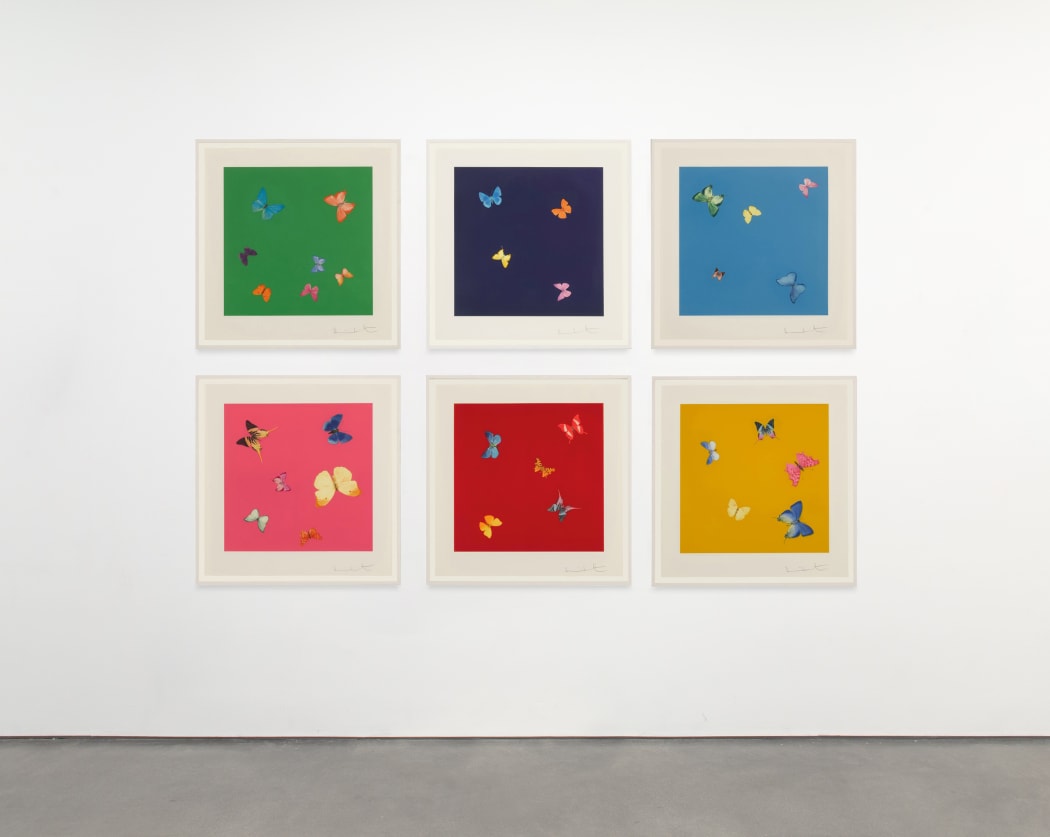
Damien Hirst's Love Poems (2014) is a vivid and eloquent testament to the artist's enduring exploration of the intricate relationship between art, life, and death. This series, composed of six photogravures, each presented with an array of butterflies, juxtaposes the ephemeral beauty of these delicate creatures against bold, brightly colored lithographic backgrounds. The butterflies, seemingly scattered randomly, evoke a sense of spontaneity and natural elegance. The individual titles of the photogravures—She Walks in Beauty, Sweet Disorder, and Lullaby—establish a poetic dialogue with the rich history of love and poetry in British culture, harkening back to the timeless works of Shakespeare and his predecessors. Through these titles, Hirst imbues his contemporary art with a historical resonance, merging the past and present in a harmonious symphony of visual and literary art.
Hirst's ascent to artistic prominence began with his curation of the seminal exhibition Freeze in 1988, while he was still a student at Goldsmiths. This groundbreaking show, which included both his work and that of his peers, garnered the attention of influential art collector Charles Saatchi. Saatchi's support was instrumental in the creation of Hirst's revolutionary piece The Physical Impossibility of Death in the Mind of Someone Living (1991), a striking display of a dead shark preserved in formaldehyde. This work, a stark meditation on the fragility and inevitability of death, catapulted Hirst to international fame. Butterflies, too, have become a recurring motif in Hirst's oeuvre, serving as a poignant symbol through which he explores themes of mortality and beauty.
Butterflies first appeared in Hirst's work in 1991 with the installation In and Out of Love, where they hatched from pupae affixed to canvases and fluttered around the room until their eventual demise. This installation functioned as a microcosm of the life cycle, encapsulating the fleeting nature of existence. Hirst further utilized butterfly wings in his Kaleidoscope paintings, arranging them in patterns reminiscent of the intricate designs of stained-glass windows, thus drawing a parallel to the Christian tradition of immortality and resurrection. Around the same time as Love Poems, Hirst's Entomology paintings and cabinets also featured butterflies alongside other insects, highlighting the paradoxical beauty found even in death. The prints in Love Poems reflect this transient nature of life and love, suggesting an ephemeral, yet eternally beautiful, existence.
While some critics might view Hirst's use of butterflies as morbid, the artist himself offers a different perspective. "I've got an obsession with death," Hirst admits, "but I think it's like a celebration of life rather than something morbid." This sentiment is vividly expressed in Love Poems, where the vibrantly colored backgrounds and the delicate, fleeting butterflies encapsulate a joyous embrace of life's impermanence. Through this series, Hirst invites viewers to contemplate the beauty that resides in the transient moments of life and love, celebrating the ephemeral with a poignantly aesthetic and poetic sensibility.


